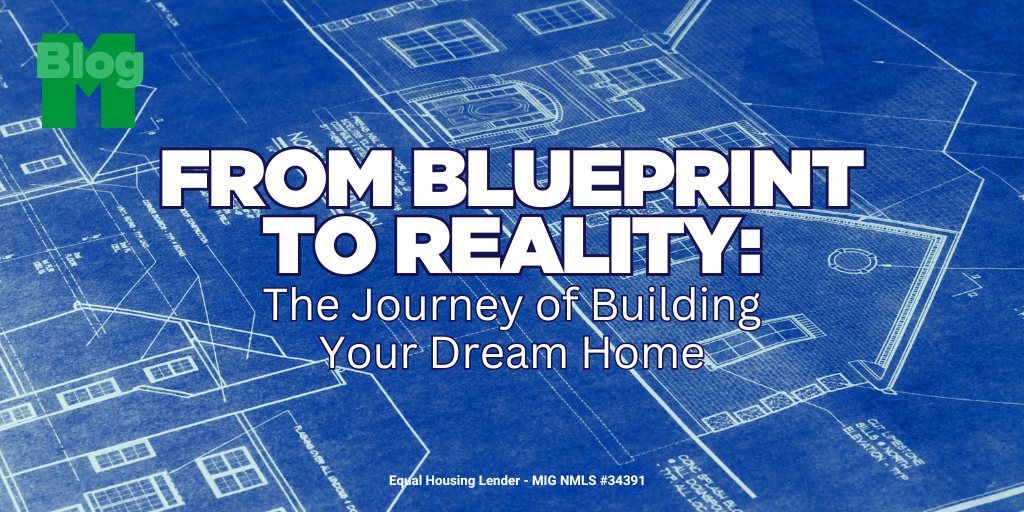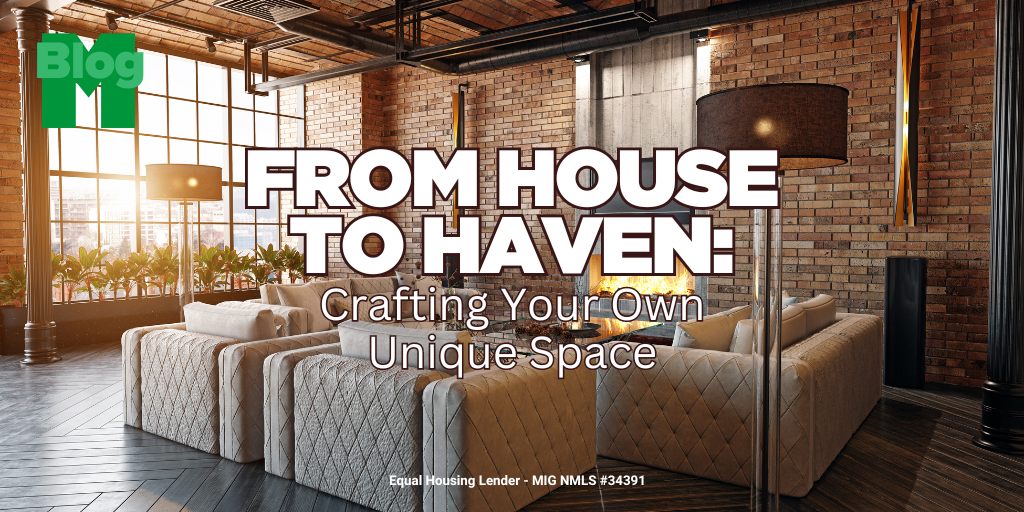
From Blueprint to Reality: The Journey of Building Your Dream Home
Building your dream home can be super exciting, but there are many steps along the way. Custom-built homes can take 9 – 12 months or more, depending on how much preparation you do. The more prepared you are from the start, the easier the process will go and the faster you can move into your dream home. There are bound to be hills and valleys, but the more you prepare, the more fun you’ll have going from blueprint to reality!
Here are the steps to building your dream home.
1. Define your Goals
You probably have all kinds of ideas swirling around in your head as you think about building your house. Before starting anything, make two lists. The first is your needs or the non-negotiable things you need in your dream house. The second is the list of wants or the things that would be nice to have but aren’t a deal breaker if you don’t.
As you create these lists, you’ll begin to see a vision or theme you want for the house. Take your time defining your goals and deciding what your house MUST have and what you can do without if it doesn’t fit your budget.
Remember, this is just the beginning. As you go through the process, things will change, but this gives you a good starting point.
This will give you an idea of the size house you need, the amenities you want, and what your budget should cover.
2. Set your Budget
It’s unfortunate that you must have a budget, and it’s important to be realistic about it from the start. This is where you’ll see what you can and cannot have in your home based on what you can afford.
Set a cushion of at least 10 – 15% within your budget. This allows for unexpected expenses and doesn’t force you to make tough decisions if you don’t have enough money to finish certain features because of the unexpected.
If you’re financing the home, be sure you account for closing costs and interest charges. The construction portion of the loan may require only interest payments, but once the home is built, you’ll owe principal and interest monthly. Be sure your budget allows enough room for everything while leaving room for emergencies.
3. Determine Where You Want to Live
Choosing the right location is a big part of building your dream home. Your budget also plays an important role in this, as each area has different costs. As you decide where you want to live, consider the following:
- The quality of the local schools
- The proximity to your workplace and other amenities
- The types of homes and how they compare to what you want to build
- The amount and type of privacy allowed
- Zoning regulations
- Neighbors and the surrounding neighborhood
If this is a long-term purchase, make sure it’s a home you can grow into if you expand your family or experience other changes. Also, pay close attention to real estate taxes. Look at current prices and historical tax rates to see how often they increase.
4. Create your Design
After nailing down the important topics of finances, location, and desired amenities, it’s time to create your design! This step is best done with a professional architect, but there are many robust online programs you can play around with, too.
If you aren’t sure exactly what you want or don’t want to pay an architect yet, you can create some of your own designs to give you a starting point when working with a professional.
If you haven’t nailed down a style yet, this step could take a while. Drive around and look at other custom homes in the area to see what you like and don’t like, and then go from there to design your home.
5. Research the Permit Requirements
A big part of building a new house is knowing the permit requirements. Not knowing what your location requires could delay the process significantly. Your builder should be familiar with the requirements in the area, but it’s not a bad idea to get to know them yourself.
Find out not only which permits are required but also how much lead time is required to get them. This can help you avoid unnecessary deals and have the proper paperwork to submit the permits on time.
You will likely only deal with the local city ordinances, but in some cases, there may also be county ordinances. Working with a local builder is the key to ensuring you meet all necessary codes.
6. Interview Builders
Choosing a builder is probably the toughest part of building your dream house. This step should take the longest because you are trusting this person or company with your future home!
You can start by getting recommendations from people you know who have built a house, but you should also do your own due diligence. Start by getting recommendations from people and then research them online. See what they offer for information online and then build your list of questions for them.
Ask any builders you speak to if you can see their previous work, either in pictures or in person, and if you can speak to people who have used them. If they don’t have any references or don’t want to share previous work, consider looking elsewhere.
Also ask potential builders what experience they have with the type of home you want to build. For example, if you want to build a Victorian house but they’ve only built farmhouses, you should look for a builder well-versed in the style you want.
7. Assemble your Team
Choosing your builder is only the start of building your dream team! You’ll need a team of architects, engineers, plumbers, electricians, carpenters, laborers, and general contractors. Some builders have their own team, and others allow you to pick and choose who you want to work on your house.
Decide what you’re most comfortable with. If you already have a few professionals you want on your team, find a builder that will allow you to bring your own professionals to the table.
8. Oversee the Construction Process
Once construction begins, your real work starts. While you aren’t the one building the house, you have a lot of work to do. It’s your job to ensure everyone communicates and is on the same page. Stay in close contact with the general contractor and relay messages to any interested parties as quickly as possible.
Don’t be afraid to visit the construction site yourself to get updates and ensure everything is how you imagined. If you see something you don’t like, speak up as quickly as possible. Remember, this is your dream home, and everything should be how you want it. The sooner you say something, the easier it is to fix it.
9. Begin Interior Design
With the exterior complete and the interior beginning to look like a house, it’s time to start interior design! This doesn’t mean furnishing the house yet, but you’ll begin picking out colors, décor, and fixtures that match your chosen style.
You may want to include an interior designer on your team if you aren’t sure what to include and not include in your new home. This is the time to add any amenities that can only be done when you build the house.
10. Move Into your Dream Home
After your final inspection, it’s time to move into your dream home! The process may have had its hills and valleys and taken up to a year, but it will be worth it in the end! If you had a construction loan, this is when it will become a mortgage, and you’ll begin making regular mortgage payments.
Final Thoughts
Going from blueprint to reality may seem impossible at first, but with the right steps, it can be a dream come true! Building a home takes a lot of patience, time, and, of course, proper finances. When done right, though, it can result in the home you live in for many years to come!



